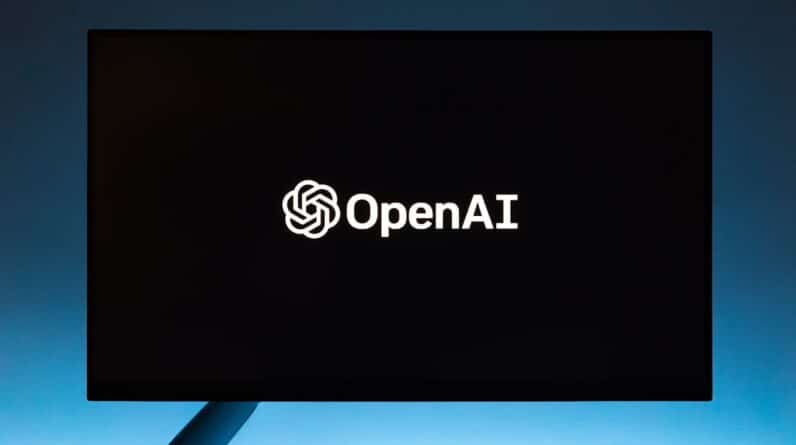Artificial Intelligence (AI) has emerged as one of the most transformative technologies of our time, reshaping industries and redefining the way you interact with the world. From the virtual assistants on your smartphones to sophisticated algorithms that drive decision-making in businesses, AI is becoming increasingly integrated into your daily life. The concept of AI encompasses a wide range of technologies and methodologies aimed at creating machines that can perform tasks typically requiring human intelligence.
This includes learning, reasoning, problem-solving, perception, and language understanding. As you delve deeper into the realm of AI, you will encounter various classifications, each with its own unique characteristics and applications. The journey of AI began in the mid-20th century, when pioneers like Alan Turing and John McCarthy laid the groundwork for what would become a rapidly evolving field.
Today, AI is not just a theoretical concept; it is a practical reality that influences everything from healthcare to finance. As you explore the different types of AI, you will come to understand the distinctions between Narrow Artificial Intelligence (ANI) and General Artificial Intelligence (AGI), each representing different levels of capability and potential. This article aims to provide you with a comprehensive overview of these two categories, their characteristics, applications, and the ethical considerations that accompany their development.
Key Takeaways
- Artificial Intelligence (AI) is a rapidly advancing field that aims to create intelligent machines capable of performing tasks that typically require human intelligence.
- Narrow Artificial Intelligence (ANI) refers to AI systems that are designed for specific tasks, such as language translation, image recognition, or playing chess.
- General Artificial Intelligence (AGI) is the goal of creating AI systems that can understand, learn, and apply knowledge across a wide range of tasks, similar to human intelligence.
- Characteristics of Narrow Artificial Intelligence include specialized task performance, limited learning capabilities, and reliance on pre-defined rules and data.
- Characteristics of General Artificial Intelligence include adaptability, learning from experience, and the ability to apply knowledge to new situations, making it more versatile than ANI.
Narrow Artificial Intelligence (ANI)
Key Characteristics of ANI
The defining feature of ANI is its ability to excel in particular domains while lacking the general cognitive abilities that characterize human thought. One of the most compelling aspects of ANI is its ability to process vast amounts of data quickly and accurately. For instance, when you use a search engine, the underlying algorithms utilize ANI to sift through billions of web pages in seconds to deliver relevant results.
Enhancing Efficiency and Productivity
This efficiency not only enhances your experience but also drives productivity across numerous sectors. ANI’s ability to process large amounts of data quickly and accurately has far-reaching implications for various industries, from healthcare to finance.
Limitations of ANI
However, it’s essential to recognize that while ANI can outperform humans in specific tasks, it does not possess self-awareness or consciousness. Its capabilities are strictly confined to the parameters set by its programming and training data.
General Artificial Intelligence (AGI)

In contrast to Narrow Artificial Intelligence, General Artificial Intelligence (AGI) represents a more ambitious goal within the field of AI research. AGI aims to create machines that can understand, learn, and apply knowledge across a wide range of tasks—much like a human being. This level of intelligence would enable machines to reason, solve complex problems, and adapt to new situations without requiring explicit programming for each task.
As you consider the implications of AGI, it becomes clear that achieving this level of intelligence poses significant challenges and raises profound questions about the future of technology. The pursuit of AGI is often likened to the quest for creating a synthetic mind capable of human-like reasoning and emotional understanding. While current AI systems excel in narrow applications, they lack the generalization capabilities that characterize human intelligence.
You may find it fascinating that researchers are exploring various approaches to AGI, including neural networks that mimic human brain functions and cognitive architectures designed to replicate human thought processes. However, as you ponder the potential of AGI, it’s crucial to acknowledge that we are still in the early stages of this journey, with many technical hurdles yet to be overcome.
Characteristics of Narrow Artificial Intelligence
Narrow Artificial Intelligence is characterized by its specialized functionality and task-oriented design. One of its most notable features is its ability to learn from data through machine learning techniques. When you interact with an ANI system, such as a voice assistant or an image recognition tool, it utilizes algorithms that have been trained on large datasets to improve its performance over time.
This learning process allows ANI to adapt and refine its outputs based on user interactions and feedback. Another defining characteristic of ANI is its reliance on predefined rules and parameters set by developers. Unlike AGI, which aspires to emulate human-like reasoning across diverse contexts, ANI operates within a specific framework tailored for particular tasks.
For example, an ANI system designed for medical diagnosis will excel in analyzing patient data but will struggle with tasks outside its designated scope. This limitation underscores the importance of understanding the context in which ANI operates; while it can achieve remarkable results in its domain, it lacks the flexibility and creativity inherent in human intelligence.
Characteristics of General Artificial Intelligence
General Artificial Intelligence is distinguished by its potential for versatility and adaptability across various domains. One of the key characteristics of AGI is its ability to learn from experience in a manner similar to humans. This means that an AGI system could not only acquire knowledge but also apply it creatively to solve novel problems.
As you contemplate the implications of AGI, consider how this capability could revolutionize industries by enabling machines to tackle complex challenges that currently require human intervention. Another significant characteristic of AGI is its potential for self-improvement. Unlike ANI systems that require manual updates and retraining, an AGI could autonomously enhance its algorithms based on new information and experiences.
This self-sustaining learning process could lead to exponential growth in capabilities over time. However, as you reflect on these possibilities, it’s essential to recognize that such advancements also raise ethical concerns regarding control and accountability. The prospect of machines with human-like intelligence necessitates careful consideration of how they are developed and integrated into society.
Applications of Narrow Artificial Intelligence

Healthcare Advancements
In healthcare, for instance, ANI systems are employed for diagnostic purposes, analyzing medical images or patient data to identify conditions with remarkable accuracy. These systems can assist doctors by providing insights based on extensive datasets, ultimately improving patient outcomes and streamlining healthcare processes.
Business Efficiency
In the realm of business, ANI plays a crucial role in enhancing operational efficiency through automation and data analysis. You may have encountered chatbots designed to handle customer inquiries or recommendation engines that suggest products based on your browsing history. These applications not only improve user experience but also allow companies to optimize their resources by automating repetitive tasks.
Driving Innovation Across Sectors
As you explore these applications further, you will discover how ANI continues to drive innovation across various sectors, making processes more efficient and effective.
Potential of General Artificial Intelligence
The potential of General Artificial Intelligence is both exciting and daunting. If achieved, AGI could revolutionize industries by providing solutions to complex problems that currently elude human capabilities. Imagine an AGI system capable of conducting groundbreaking research in fields like climate science or medicine—an entity that could analyze vast datasets and generate insights far beyond human comprehension.
This level of intelligence could lead to unprecedented advancements in technology and society. However, as you consider the potential benefits of AGI, it’s essential to weigh them against the risks involved. The development of AGI raises questions about control and ethical considerations surrounding autonomous decision-making systems.
You may find yourself pondering scenarios where AGI could surpass human intelligence, leading to concerns about job displacement or even existential risks if such systems operate beyond our control. The dialogue surrounding AGI must encompass not only its capabilities but also the frameworks necessary to ensure its responsible development and deployment.
Ethical and Societal Implications of Artificial Intelligence
As AI continues to evolve, so too do the ethical and societal implications associated with its use. One pressing concern is the potential for bias in AI algorithms, which can perpetuate existing inequalities if not addressed properly. When you consider how data is used to train AI systems, it becomes clear that biased data can lead to biased outcomes—affecting everything from hiring practices to law enforcement decisions.
It’s crucial for developers and policymakers alike to prioritize fairness and transparency in AI systems to mitigate these risks. Moreover, the rise of AI technologies raises questions about privacy and surveillance. As you navigate a world increasingly influenced by AI-driven tools, you may find yourself reflecting on how your data is collected and used by various entities.
The balance between innovation and individual rights becomes paramount as society grapples with these challenges. Engaging in discussions about ethical AI development will be essential as we move forward into an era where artificial intelligence plays an integral role in shaping our lives. In conclusion, understanding the distinctions between Narrow Artificial Intelligence and General Artificial Intelligence is vital as you navigate this rapidly evolving landscape.
While ANI has already made significant strides in enhancing efficiency across various sectors, AGI remains an aspirational goal fraught with both promise and peril. As you engage with these technologies, consider their implications not only for your own life but for society as a whole—ensuring that the development of AI aligns with ethical principles that promote fairness, transparency, and accountability.
If you are interested in learning more about the applications of artificial intelligence in retail, I recommend checking out this article informative. Both articles provide valuable insights into the different ways AI is being utilized in various industries.
FAQs
What are the two types of artificial intelligence?
There are two types of artificial intelligence: Narrow AI (or Weak AI) and General AI (or Strong AI). Narrow AI is designed to perform a specific task, while General AI is capable of understanding, learning, and applying knowledge across different tasks and domains.






